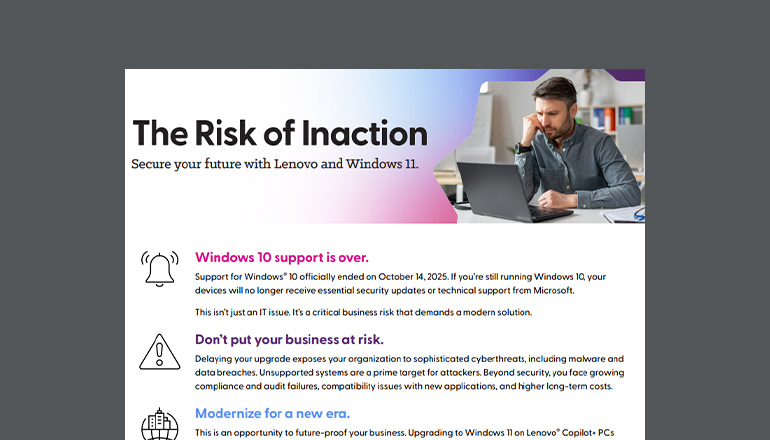Article 3 Technology Trends Changing How We Work
Over the past two years, we adapted to remote work and the accompanying technology. Now, three new trends will change how we work in the near future.
By Tre Powers / 3 Dec 2022 / Topics: Artificial Intelligence (AI) Modern workplace Digital transformation

The way we work continues to change every year — and technology is paving the way by creating more opportunities for innovative thinking and enabling leaders to adopt more creative processes.
From Artificial Intelligence (AI) to sustainability, business leaders and IT decision-makers are finding new and innovative ways to overcome today’s biggest challenges. Here are the latest top three technology trends changing how we work.
1. AI
AI has made its way into our personal lives in the form of personal assistants like Siri and Alexa. And, many IT leaders are leveraging the benefits of AI for business applications.
Common workforce uses for AI include:
- Customer relationship management can automate touchpoints throughout a purchase journey, including personalized follow-up messages designed to keep customers engaged and connected.
- AI transforms machine learning by collecting and contextualizing large amounts of data and sending it to IT decision-makers. This allows these leaders to make informed, relevant choices.
- AI systems can change cybersecurity by recognizing cyberattacks and threats and monitoring patterns to detect and prevent threats.
- The most common use for AI is digital personal assistants.
AI enables businesses to personalize the customer experience, reduce risk and automate processes. This trend will only continue to grow, making automating “simple” tasks even easier so your teams can focus on more challenging tasks.
2. Virtual Reality (VR)
VR has gone beyond the living room into the modern workplace. An invaluable tool across a variety of sectors, VR has reshaped retail, healthcare, manufacturing, financial services and more.
Many businesses use VR headsets for customer service training, product showcases, manufacturing and product development, travel and employee education. As a result, VR is becoming one of the most cost-effective ways to train remote and hybrid workers.
And, VR is opening the door to more job opportunities. Currently, there are less than a million jobs impacted by VR and AR; however, that number is expected to rise in the coming years — up to 23 million jobs by 2030, according to PwC.1
3. Sustainability and green technology
Sustainable business practices aren’t a new concept. Many companies have found small, incremental ways to lower their carbon footprint and create a more sustainable technology portfolio. And that trend is expected to rise: Gartner expects that by 2025, 50% of CIOs will have performance metrics tied to the sustainability of their IT organization.2
And, many technology companies, including Acer and Google, are focusing on tackling ambitious environmental goals by creating devices from sustainable materials to reduce costs and carbon emissions.
The shift to sustainability is driven by consumers as much it is by as business leaders. 85% of consumers say they consider stainability in their purchases more now than they did five years ago — and, as a result, many business leaders see the value in making more environmentally friendly products and solutions.3
The future of work is here.
As the way we work continues to evolve, smart technology investments can help your organization gain a competitive edge. AI, VR and AR, and sustainable technologies have already made an impact — and their influence is only expected to grow.
Sources:
1 PwC. (2020, Jan. 12). Virtual Reality (“VR”) and Augmented Reality (“AR”) Could Deliver a $4.1 Billion Boost to the UAE Economy by 2030.
2 Wiles, Jackie. (2022, Sept. 27). Are You Thinking Too Small About Sustainable Technology?.
3 M., Y. (2022, March 19). Business Going Green Statistics [Industry, Cost, Trends and 2022 Update]. Renolon.




